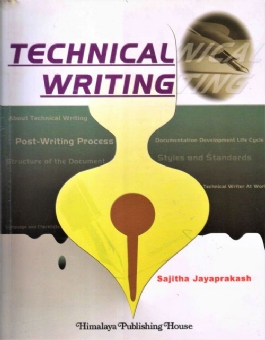Technical Writing
no information available
This book covers all the basic aspects of technical writing and so, it is a one stop reference point for the new writers and even those who are pursuing a career in this field. This book is not restricted to the technical writers. It can be used by anyone who is interested in learning to write well--freshers, technical writers, translators, managers (not related to documentation), students, etc. For those who are looking at making a career in this field, this book will help them understand the concepts of technical writing which will in turn help them make appropriate decision regarding their career choice. This book will act as a comprehensive reference guide for technical writers, with the objective to teach them the basic concepts (if they are not still aware of it), the various tools used, the use of styles and formats, the language and the sentence structure, and the documentation process that is usually followed. It will also provide information about audience analysis, planning, usability, language, indexing, rewriting, editing, style guides, tools, document design, and checklists. Makarand (Mak) Pandit says, 'This book is a must-have for new entrants as well as professionals. All these years I have been asking my students and colleagues to read the books written by foreign authors. Now I can proudly direct them to this book'. Contents - Part I : About Technical Writing 1. Frequently Asked Questions 2. Introduction to Technical Writing 3. Skills of a Technical Writer 4. Documentation Types Part II : Documentation Development Life Cycle (DDLC) 5. Documentation Process 6. Integrating DDLC and SDLC 7. Planning the Project 8. Determining the Audience 9. Writing 10. Reviewing the Documents Part III : Post-Writing Process 11. Technical Editing 12. Indexing 13. Looking Back and Ahead - Postmortem Part IV : Styles and Standards 14. Gook Documentation 15. Quality and Usability of Documents 16. Setting the Standards and Style 17. Guidelines Part V : Structure of the Document 18. Organizing Information 19. Structuring the Information 20. Parts of a Documents 21. Structuring Various Documents Part VI : Technical Writer At Work 22. Becoming a Technical Writer 23. Technical Writing as a career 24. Writing and Impressive Resume 25. Attending an Interview 26. At Work 27. Team Culture Part VII : Language and Checklists 28. A Dozen Punctuation Rules 29. 20 Rules of Effective Writing 30. Frequently Misused Words 31. Checklists Part VIII : Appendices A. Localization B. Graphical User Interface C. Technical Writing Tools D. A Comparative Study : Chak De India Glossary Bibliography Index











